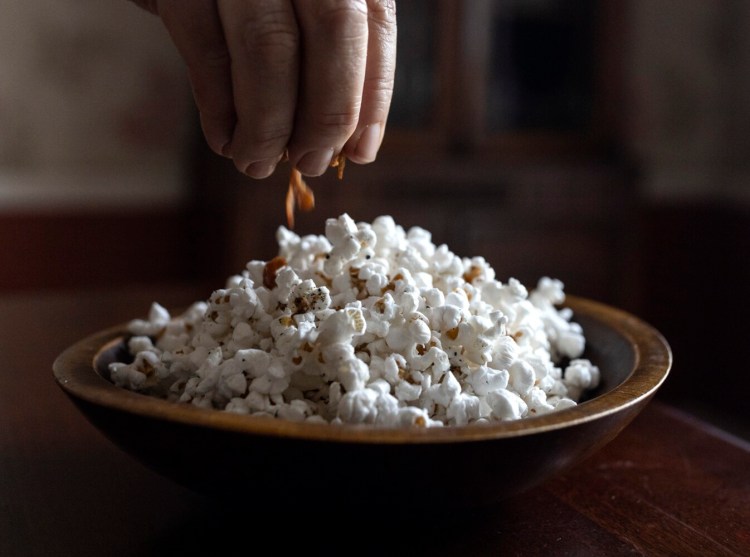In my 30-something years as a journalist, I have written a few restaurant reviews and dozens of email security product reviews, my share of performance reviews and a handful of cookbook reviews. But this is my very first movie review.
“Meat Me Half Way” is an 80-minute investigative documentary scheduled for release on Tuesday. The film explores the tiny islands of common ground that could exist in the gulf between vigilant vegans and overcommitted carnivores if the two groups took a moment to listen to each other.
I could watch this film again and again. That’s high praise from me because I am a plot person. Once I know how a story plays out on the screen (or in a book), I rarely feel the urge to watch (or read) the same story again. With “Meat Me Half Way,” I really have no idea how this story will play out as the issues surrounding meat-eating are both national in scale – industrial meat production emits huge amounts of greenhouse gases – and as highly personal as what you choose to eat for dinner. Given that the film establishes reasonable arguments for both eating and avoiding meat, the outcome could go either way. The point is to listen carefully to the other side.
I received a digital pass to the film’s screening last week because in September 2019, I attended a conference sponsored by The Reducetarian Foundation. This nonprofit organization believes that getting committed carnivores to eat less meat a couple of times a week would have a bigger impact on stemming global climate change than converting vegetarians to veganism. The foundation’s founder and the film’s director, Brian Kateman, explains in the film (as he did at the conference) that the average American eats about 200 pounds of meat, fish, eggs and dairy products annually. The average American lacto-ovo-vegetarian eats about 10 pounds of eggs and dairy per year. Getting meat eaters to cut 10% of their meat consumption (a reduction of 20 pounds) would make a bigger impact, pound for pound, than getting a vegetarian to go vegan (a reduction of 10 pounds).
Those numbers seem pretty black and white to me. The film, though, explores the grayer areas of the meat/no meat conversation. It uses Kateman’s endearing relationship with his parents to illustrate just how far some meat eaters are from accepting that their daily habits affect climate change. It uses Kateman’s sometimes volatile relationship with the vegan community to bring viewers to a vigil where animal rights advocates are giving water to thirsty hogs being trucked into a California slaughterhouse. The film brings watchers to a farm in Georgia where a farmer explains the complex relationship he has with the chickens, pigs, cows and turkeys he raises on pasture, kills humanely, and sells for a pretty penny to customers who can afford sustainably reared meat. And it walks viewers through the complicated scientific processes it takes to make plant-based meat products and to cultivate cellular meat in laboratories in California.
The amount of information in this film, while it is both fascinating and multi-faceted, is hard to digest in a single viewing. I suggest you make a double batch of popcorn and plan to watch it at least twice when it becomes available electronically on Tuesday on iTunes, Amazon and Google Play.
Christine Burns Rudalevige is a food writer, recipe developer, tester and cooking teacher in Brunswick, and the author of “Green Plate Special,” a cookbook from Islandport Press based on these columns. She can be contacted at: cburns1227@gmail.com.

Rudalevige makes popcorn to watch with the new documentary film “Meat Me Halfway.” Brianna Soukup/Staff Photographer
Bacon and Black Pepper Popcorn
If you don’t eat bacon, use 1/4 cup vegetable oil to pop the corn and sprinkle with smoked dulse flakes, black pepper and fine sea salt.
Makes 8 cups
6 strips uncooked smoked bacon, cut into 1/4-inch pieces
2 tablespoons vegetable oil
1/2 cup popcorn kernels
1/2 teaspoon finely ground black pepper
Fine sea salt, to taste
Heat a large pot over medium heat, then add the chopped bacon. Cook until crisp, about 3 minutes, stirring occasionally. Transfer bacon to a flattened paper bag to drain. Add the vegetable oil to the bacon fat remaining in the pot and return the pot to medium heat. Add the popcorn kernels and shake the pot to gently toss the kernels until they are coated in fat. Cover with a lid that is placed slightly ajar to allow the steam to escape.
Cook until the popping frequency slows to several seconds between pops. Remove from the heat and pour the popcorn into a large bowl. Immediately toss with the pepper and fine sea salt. Sprinkle with the reserved bacon bits. Eat, watch the film and digest both.
Send questions/comments to the editors.



Comments are no longer available on this story